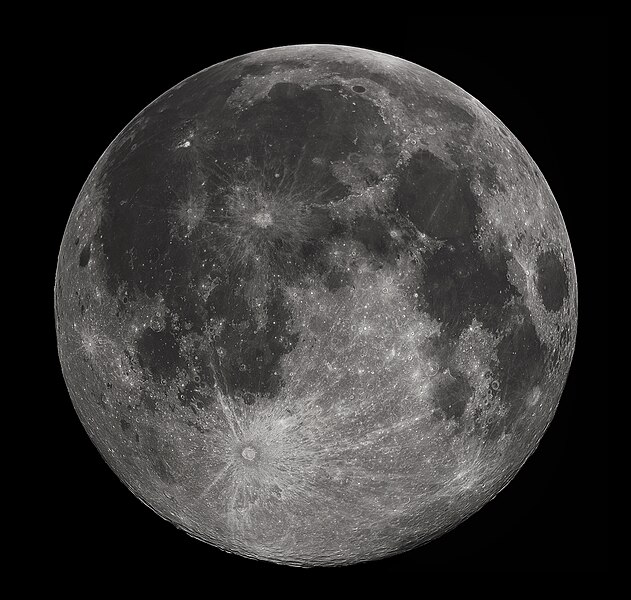 |
| Call that a moon? THIS is a moon! (Apologies to Crocodile Dundee) |
One of the most dramatic examples of this over the years has been their varying answers to the question 'how many moons does the Earth have?' While the show has been running the accepted QI answer has been various numbers between 2 and 20,000, but never one, the obvious and actual answer. But I have to say, if I were ever on the programme I would protest loud and long if hit by this question, because that answer of 'one' is correct.
They excuse their latest, 20,000 (that's from memory - it was some large number) value by saying there are lots of little lumps of rock that get captured by Earth's gravitational field for a few days and while captured they are natural satellites, which makes them moons. But this is the excrement of the male cow. You might as well say the Sun has many thousands of planets, because of all the asteroids, as a planet is a satellite of the Sun. However, we all know there are just eight planets.
Now to be fair, with planets there are clearer rules. To be a planet the body has to (in my wording):
- Orbit the Sun
- Be roughly spherical
- Have swept its orbit clean of minor debris
... this last one being what did for Pluto. But I would suggest, whether or not there is an IAU definition of 'moon' as there is for 'planet' there are still clear intended consequences of using the word 'moon' as opposed to just 'satellite'. These are that the body in question should be:
- Long lasting - I suggest staying in orbit for at least 1,000 years
- Sizeable - say at least 5 kilometres across
This would still allow moon status for the pretty dubious companions of Mars, Phobos and Deimos, which are about 20 kilometres and 10 kilometres across.
Clearly such rules are there implicitly when we talk about moons. If the time rule didn't exist, then every lump of rock that spent 5 minutes in our company would be a moon, while without the size rule, we would have to count every tiny piece of debris in Saturn's rings as a moon - every one of them is, after all, a natural satellite.
No, I'm sorry QI, but everyone who is not a teenager or drunk realises that mooning is not funny, and it's not clever, and it's time you gave it up.

Comments
Post a Comment